Try our homemade basil pesto sauce recipe with, of course, fresh basil, along with garlic, parmesan cheese and walnuts. Blends in your food processor in seconds, and tastes like a quick trip to the heart of the Mediterranean.
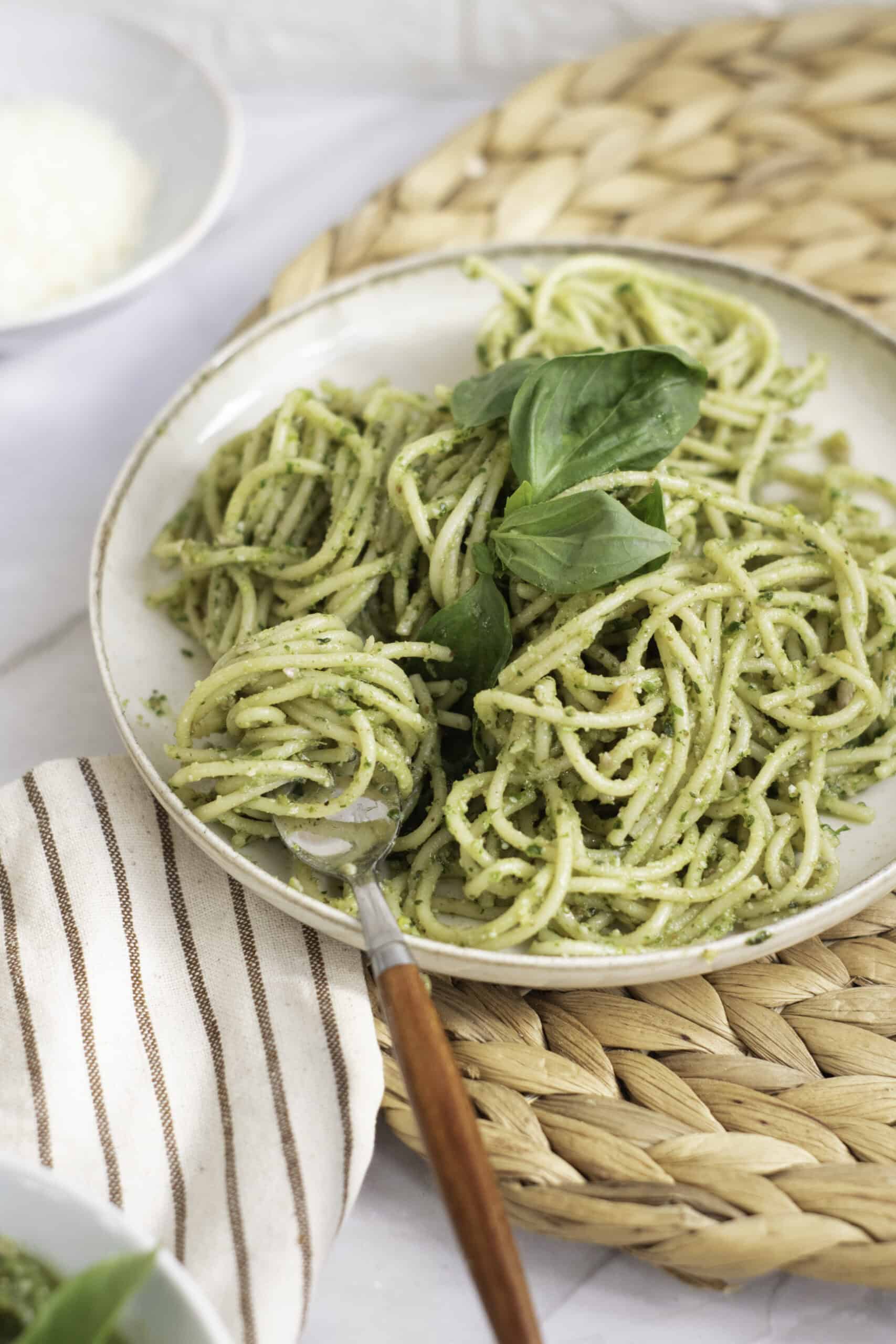
Jump to:
About this Recipe
Basil pesto was a flavor we didn't know much about when we got married. But, we were on a date one Saturday evening, and at dinner we both decided to try a basil pesto chicken dish with vegetables. When the food arrived the rich aroma of fresh basil and rich garlic smelled so beautiful we couldn't wait to try it.
Long story short—it was a HIT! The Mediterranean flavors coupled with the tender chicken chicken breast and veggies roasted in olive oil was like a trip to Italy! We loved it so much, we both sopped up the extra pesto sauce with bread until the plate was clean!
We've since fallen in love with this homemade basil pesto sauce and often use it on chicken, potatoes, pasta and even bread.
Use Fresh Basil
Our recipe starts with, you guessed it, basil. You can use dried basil in this dish, but we typically prefer the taste of fresh basil. Our instructions call for 2 full cups of basil leaves, which can get expensive (around $15 at our grocery store), so after making this sauce a couple of times, we just bought a medium-sized basil plant for the kitchen and clip off leaves as we need them. Cheap and convenient!
PRO TIP: 2 Cups of Fresh Basil = ⅔ Cup Dried Basil
If you're using fresh basil, make sure to wash and then dry the leaves to ensure they're clean and free of moisture.
Mix Ingredients in a Food Processor
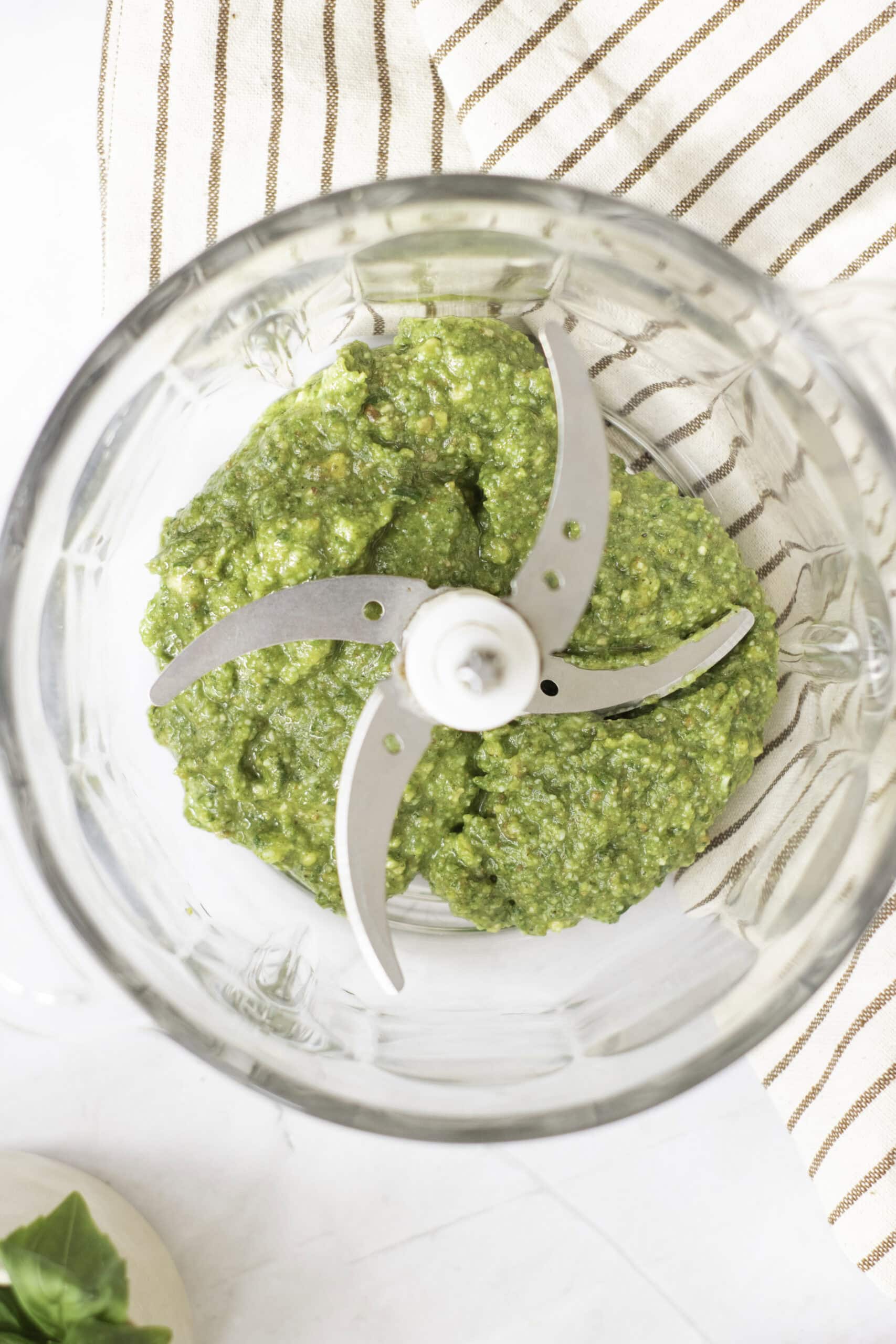
Next, add all the basil leaves to a food processor and combine with the parmesan cheese, garlic and walnuts. Many traditional pesto recipes call for pine nuts instead of walnuts, but we like the texture of the walnuts better. (Plus, they're cheaper and more readily available.)
With all the ingredients added to the food processor, quickly pulse the mixture a few times to achieve a course consistency. With the food processor running on low, slowly stream in the olive oil until the sauce reaches a smooth texture.
All that's left to do is season with salt and pepper to taste and serve with your favorite foods for an amazing Mediterranean flavor that whips up in mere minutes!
What we like about this recipe!
Nicole - I'm so happy I tried something new, so we could enjoy this recipe with all of you. My mom was a travel agent when I was a kid, so we went on many adventures. The vacations were amazing, but I also feel like that set a precedent in my life— trying new foods and flavors really opened my palate and enhanced my love for traveling!
Mike - I love how versatile this homemade basil pesto sauce is. You can use it on virtually anything, including pasta, chicken, steak, vegetables and even fresh-baked bread. Yum!
Ingredients
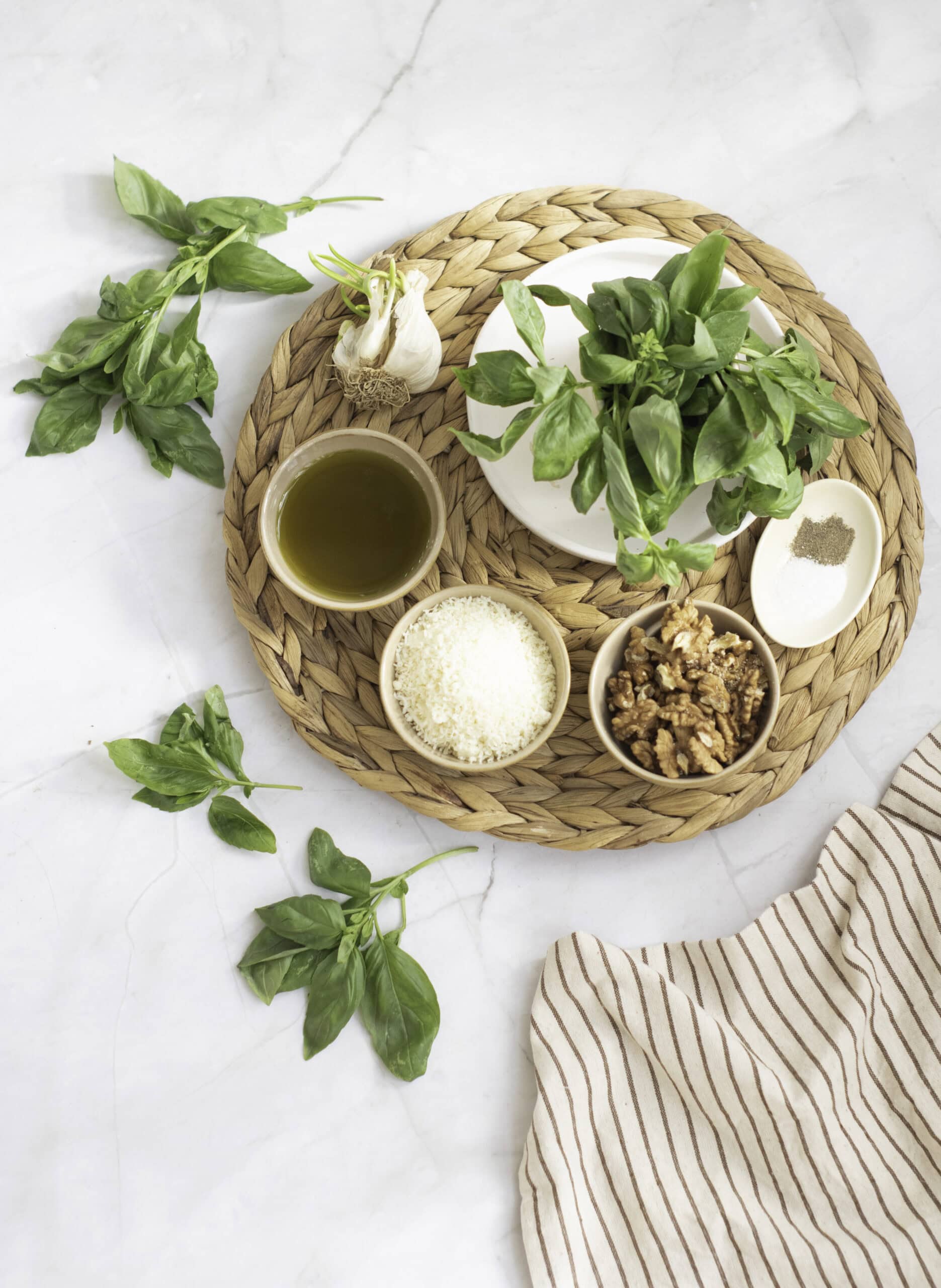
- 2 cups fresh basil leaves, packed lightly or ⅔ cup dried basil
- ½ cup freshly grated Parmesan cheese
- ½ cup extra-virgin olive oil
- ⅓ cup walnuts
- 2 garlic cloves, peeled
- Salt and black pepper, to taste
Tips and Tricks
- You can swap out the walnuts for pine nuts, almonds, or other nuts you love.
- We like to use fresh basil, but avoid wilted leaves that could make it taste dull or old.
- Toasting the walnuts before adding them to the food processor will bring out the natural flavors to make the sauce richer and nuttier. Just be careful not to burn them. (I would probably burn everything if I didn't have Alexa keeping time for me.)
- If the pesto is too thick you can always dilute with water, lemon juice or more olive oil.
- A quality food processor is our favorite choice for processing sauces and mixtures like this one. You can use a blender; however, we tried our high powered Vitamix and the mixture just clumped up and wouldn’t blend. When we switched it over to the food processor, it blended perfectly.
FAQ
If Basil is out of season or you can’t grow it on your own, you can substitute for parsley, cilantro, arugula or even spinach. You could also blend multiple herbs with the basil if you wanted to get super creative. Something like arugula and kale would taste more peppery.
Walnuts offer more earthly and slightly bitter taste.
Almonds have a lighter and nuttier taste with smoother texture.
Cashews add a creamier and more mild flavor.
For a nut free option- try pumpkin seeds, hemp seeds, or even edamame.
Pasta is always quick and easy.
Roasted potatoes are one of our favorites. The baby red potatoes are perfect cut in half, tossed in the basil pesto, and roasted in the oven.
Adding this sauce on Pizza or any type of bread is great. As mentioned above, dipping virtually any kind of bread in the sauce is delicious.
Basil Pesto works great on seafood. White fish or shrimp is a great option.
Usually in an airtight container in the fridge it will last about a week or you can freeze up to 2-3 months.
Related
Looking for other recipes like this? Try these:
Pairing
These are my favorite dishes to serve with this basil pesto sauce:
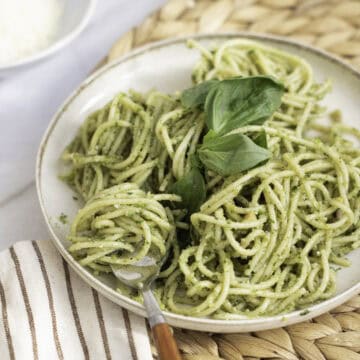
Homemade Basil Pesto Sauce
Equipment
Ingredients
- 2 cups fresh basil leaves packed lightly or ⅔ cup dried basil
- ½ cup freshly grated Parmesan cheese
- ½ cup extra-virgin olive oil
- ⅓ cup walnuts
- 2 garlic cloves peeled
- Salt and black pepper to taste
Instructions
- Wash and dry the fresh basil leaves, ensuring they are clean and free of moisture.
- In a food processor, combine the basil, Parmesan cheese, walnuts, and peeled garlic cloves.
- Pulse the ingredients a few times until coarsely chopped.
- With the food processor running, gradually add the olive oil in a steady stream. Continue processing until the mixture becomes smooth and well combined.
- Season the pesto with salt and black pepper, adjusting to taste. If you prefer a saltier flavor, you can fold in a bit more of the Parmesan cheese.
- If the pesto is too thick, you can add more olive oil until you reach your desired consistency.
- Transfer the fresh basil pesto to a jar or airtight container. It can be stored in the refrigerator for up to a week. Alternatively, use it immediately as a sauce for pasta, a spread for sandwiches, or a topping for grilled meats.


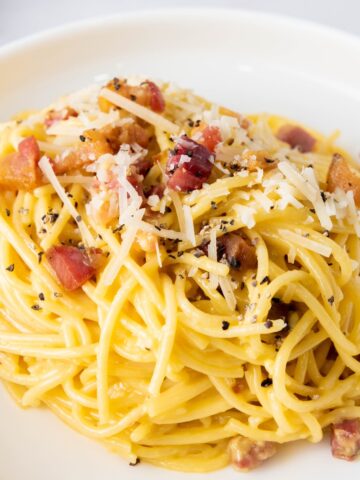

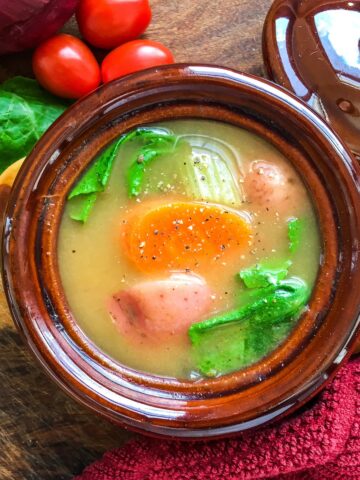


Comments
No Comments